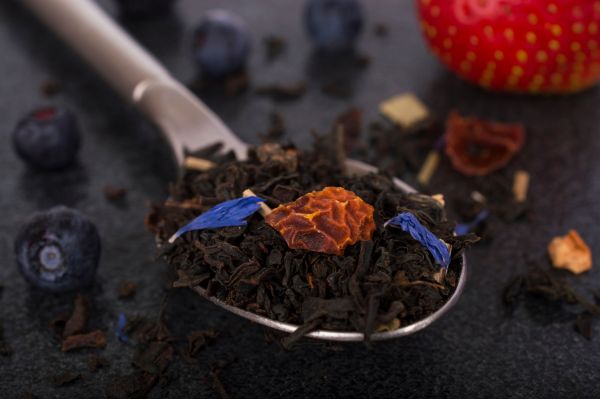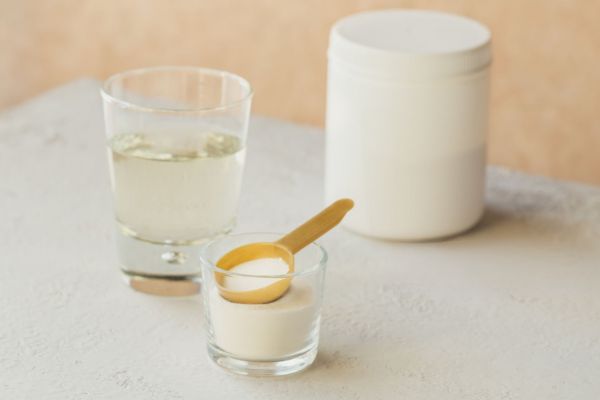Both are made from tea leaves, so what is the difference between the matcha and green tea powder productions?
Contents
Introduction
Many people often confuse matcha and green tea powder, which are in powder form and have green colors. However, their production processes are distinct, resulting in differences in quality, texture, flavor, and taste. From cultivating and harvesting, to processing, matcha production is more complex and requires stricter conditions. Let’s explore those differences in the article below.
Understanding matcha and green tea powder
Matcha is a finely ground powder made from green tea leaves. It first appeared in China in the 7th and 10th centuries; however, the process was developed and perfected in Japan, which is currently the most famous region for matcha production. Matcha is characterized by its bright green color and strong umami flavor. Traditionally, it is whisked into hot water to make a frothy beverage. A product must adhere to strict regulations to be considered genuine matcha.
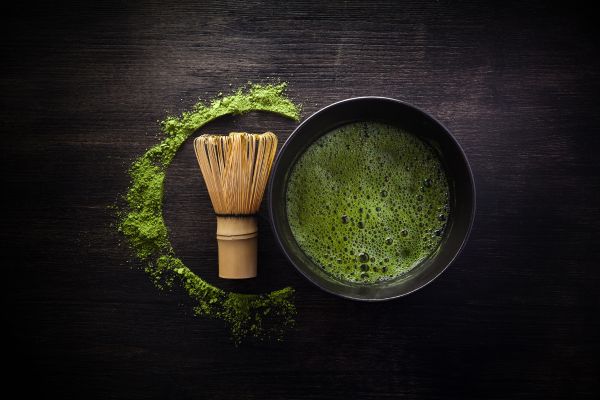
Green tea powder is also made from green tea leaves. The leaves are dried and ground into powder form. Nevertheless, green tea powder is not subjected to the same specific cultivation and processing methods as matcha, resulting in different tastes and colors.
Cultivation and growth conditions
How the tea is grown will significantly affect the quality of the final products. The cultivation of the tea plants is where the biggest production differences start.
Matcha: Shade-grown process
Matcha is ground from tencha that is the green tea leaf is grown under shade, usually industrial plastic netting, at least three weeks before harvesting. During the shading process, around 70 to 90% of sunlight is blocked. The shortage of direct sunlight forces the plants to work harder to photosynthesize and boost chlorophyll. As a result, the levels of L-theanine, an amino acid that gives matcha its distinct flavor and relaxing properties, increase.
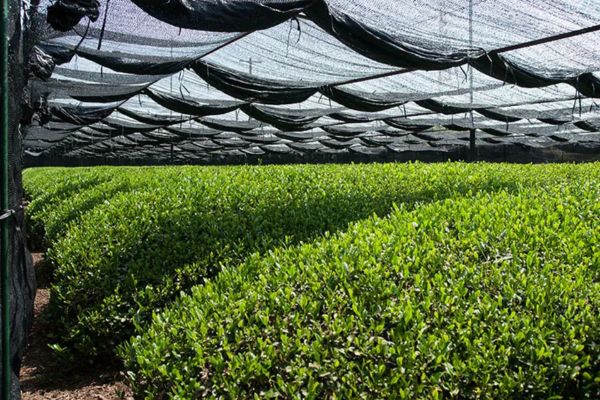
Green tea powder: Grown in full sunlight
On the other hand, tea leaves used to make green tea powder are grown naturally in the sun. Green tea powder might have less L-theanine, but it contains more catechins, the antioxidants that give the tea its bitterness and astringency.
Harvesting
Matcha: Hand picking
To make matcha, the youngest and most tender leaves are always hand-picked, typically during the year’s first harvest. The leaves are carefully selected to ensure a uniform and smooth flavor. After that, the veins and stems are removed from the leaves, keeping only the green part of the foliage, which is called tencha.
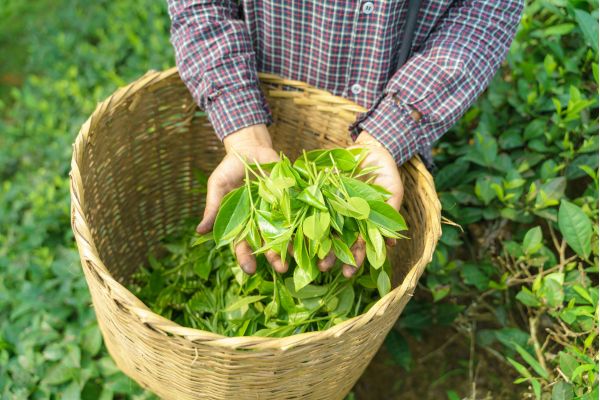
Green tea powder: Mechanically harvested
Tea leaves used for making green tea powder are harvested by both manual and mechanical methods. The stems and veins are still kept and ground. In addition to young leaves, more mature leaves are sometimes included.
Processing methods
The production processes of matcha and green tea powder also witness some significant differences. Generally, matcha requires a more complicated process to ensure high quality and premium flavor.
Matcha production process
- Steaming: After harvesting, tea leaves are quickly steamed to avoid oxidation and retain the full bright green color.
- Drying: Steamed leaves are cooled and dried gently.
- Removing stems and veins: Tea leaves are cut to smaller sizes and blown through a rolling machine to remove the stems and leaf veins. After a few vacuum sorter steps to separate the leaves and stems, tencha is gathered.
- Grinding: Tencha is ground into an ultra-fine powder using traditional granite stone mills or modern milling machines. Traditional grinding methods might require a longer time to ensure the quality of matcha tea.
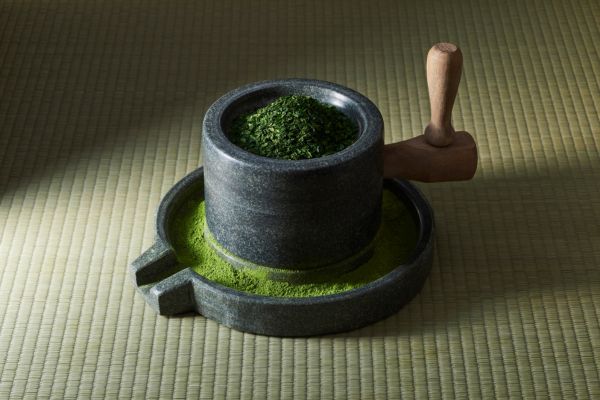
Green tea powder production process
- Drying: The leaves are dried instead of steaming and having their stems and veins removed. The drying process might take hours. Some manufacturers even pan fry the tea leaves to allow them to release more aroma and flavor. By using this technique, the flavor profile of the final products is changed, becoming more roasted and somewhat bitter.
- Grinding: The dried tea leaves are rolled and cut into smaller pieces. After that, they are ground into powder using machinery.
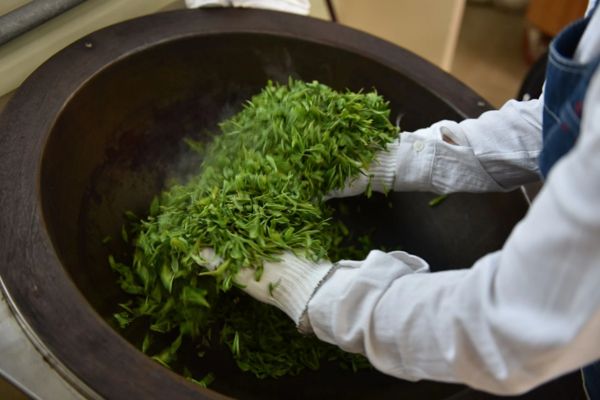
Finished products
Because of the differences in cultivation, harvesting, and processing, the final products will have different color, texture, and taste.
Matcha
The finished qualified matcha powder has a bright and vibrant green color. Although both come from tea plants, matcha ingredients are often from younger leaves, bringing a smoother texture. As a result, matcha is slightly sweet with no bitterness and a characteristic umami taste. It is ideal for traditional tea ceremonies, lattes, high-end desserts, and health products.
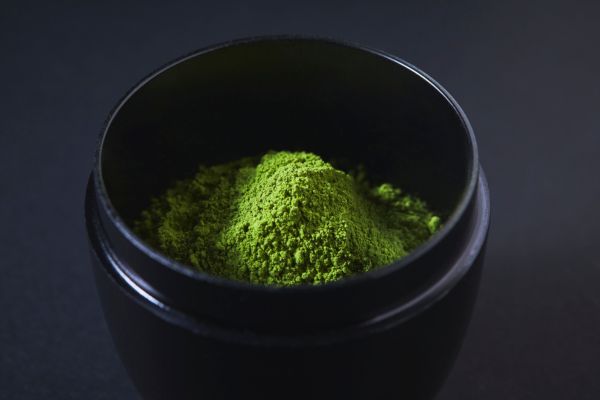
Green tea powder
Tea leaves used to make green tea powder are often more mature, leading to a coarser and tougher texture. Because the tea leaves are not steamed, the finished green tea powder is often not as bright and vibrant in color as matcha. The leaves’ age and further drying process make green tea powder more astringent and slightly bitter.
Market value
Generally, matcha is more costly than green tea powder because of its complex cultivation and time-consuming production procedure. Authentic Japanese matcha, particularly from areas like Uji, Nishio, and Shizuoka, is extremely valuable and can be several times more expensive than normal green tea powder. Because green tea powder is cheaper to produce, it is widely accessible and utilized in more affordable applications, such as baking, cooking, and flavored tea blends.
Conclusion
Although made from the leaves of Camellia sinensis plants, matcha and green tea powder productions are not the same. They differ in how they are grown, harvested, and processed. These differences result in the dissimilarity in their market value and quality. Understanding the differences in their productions is crucial for manufacturers to make appropriate business decisions.
About Future Generation Co.,Ltd
We are FGC, the leading tea and beverage exporter in Vietnam and one of the biggest tea suppliers in the world. Our tea products are diverse in types, grades, and production methods. We provide customers with Loose tea (such as Black tea, Green tea, and Oolong tea), Herbal tea (such as Rose tea, Chamomile tea, and Lotus tea), and Specialty tea (such as Matcha), RTD Tea, and Tea Bags. Our mission is to become Vietnam’s leading healthy beverage company.
We ensure stable tea sources for domestic markets and exports with vast high-grown tea farms and available herb gardens. Our tea gardens and factories also meet international standards such as ISO, HACCP, KOSHER, HALAL, etc. In addition, we constantly innovate our machinery system, strengthen production capacity, and increase productivity. We also provide private label and customized packaging services for small and medium enterprises.
If you are a tea distributor, tea importer, teashop manager, or even tea lover, we are committed to being your prestigious tea source supplier in Vietnam!
Contact
Address: R4 building, Office Quarter 02, Royal City, 72A Nguyen Trai St., Thanh Xuan Ward, Hanoi.
Phone: +84 24 73 000 125/ +84 24 73 063 369
Mail: info@vietnam-tea.com
Website: https://vietnam-tea.com/
Facebook: https://www.facebook.com/fgcvietnamtea







